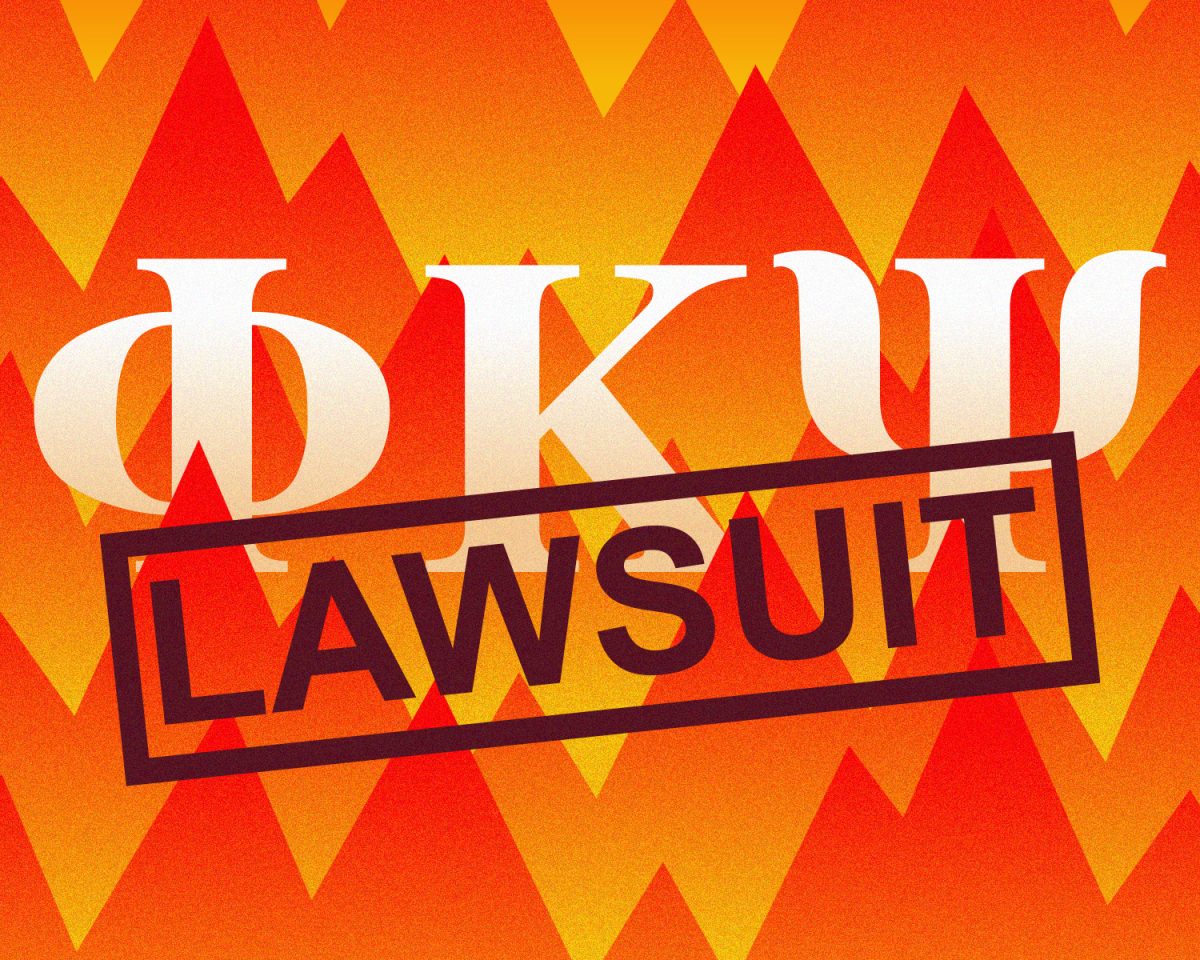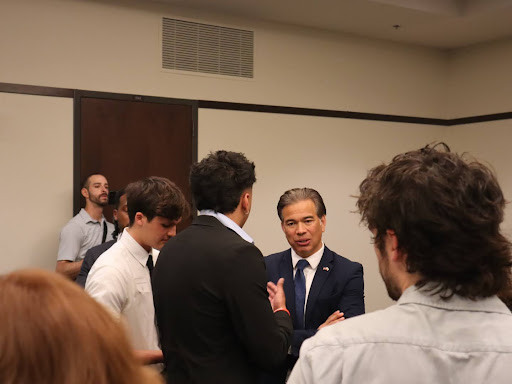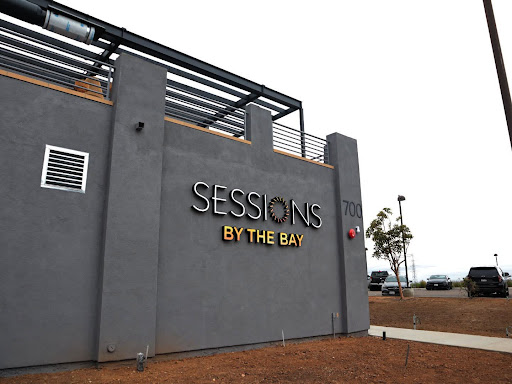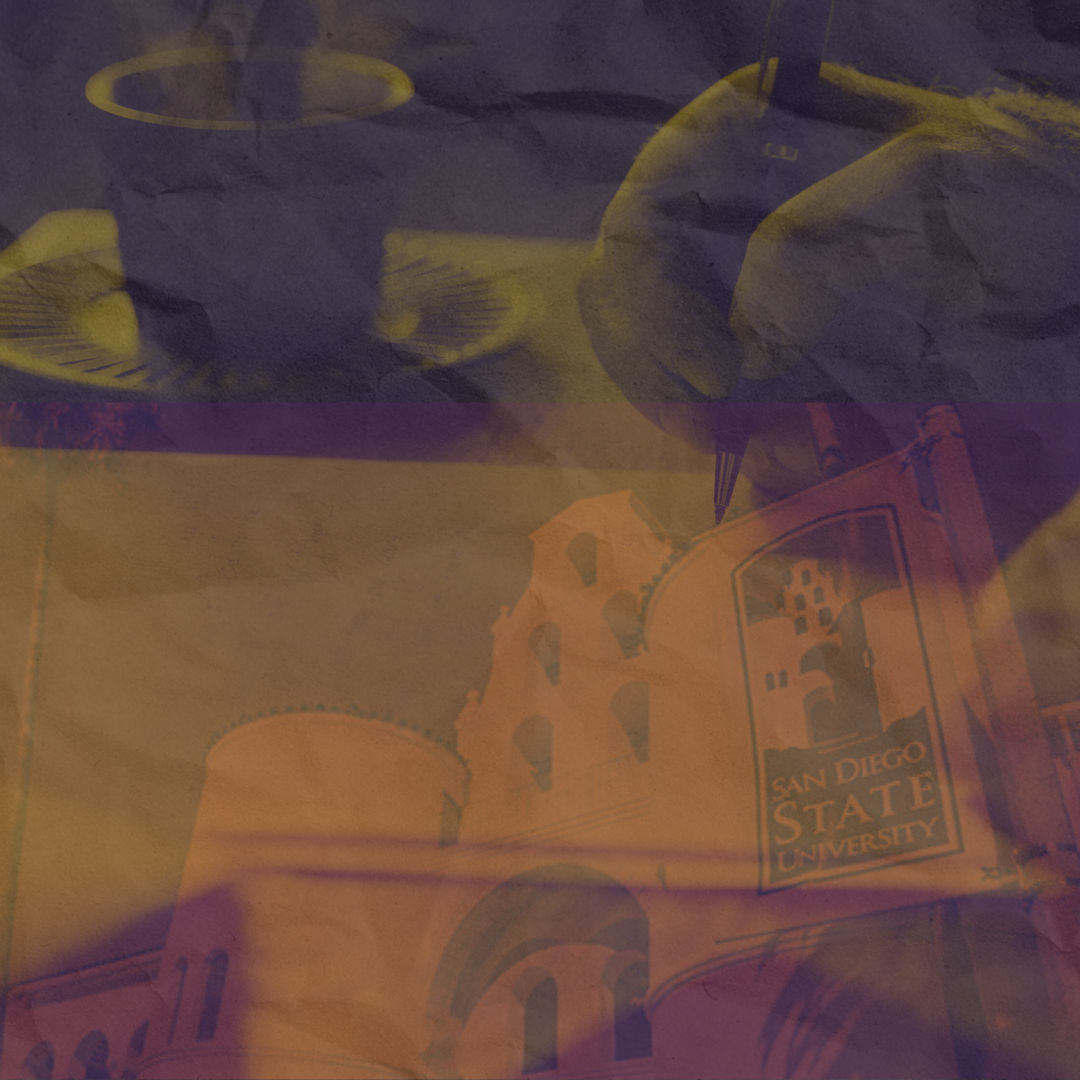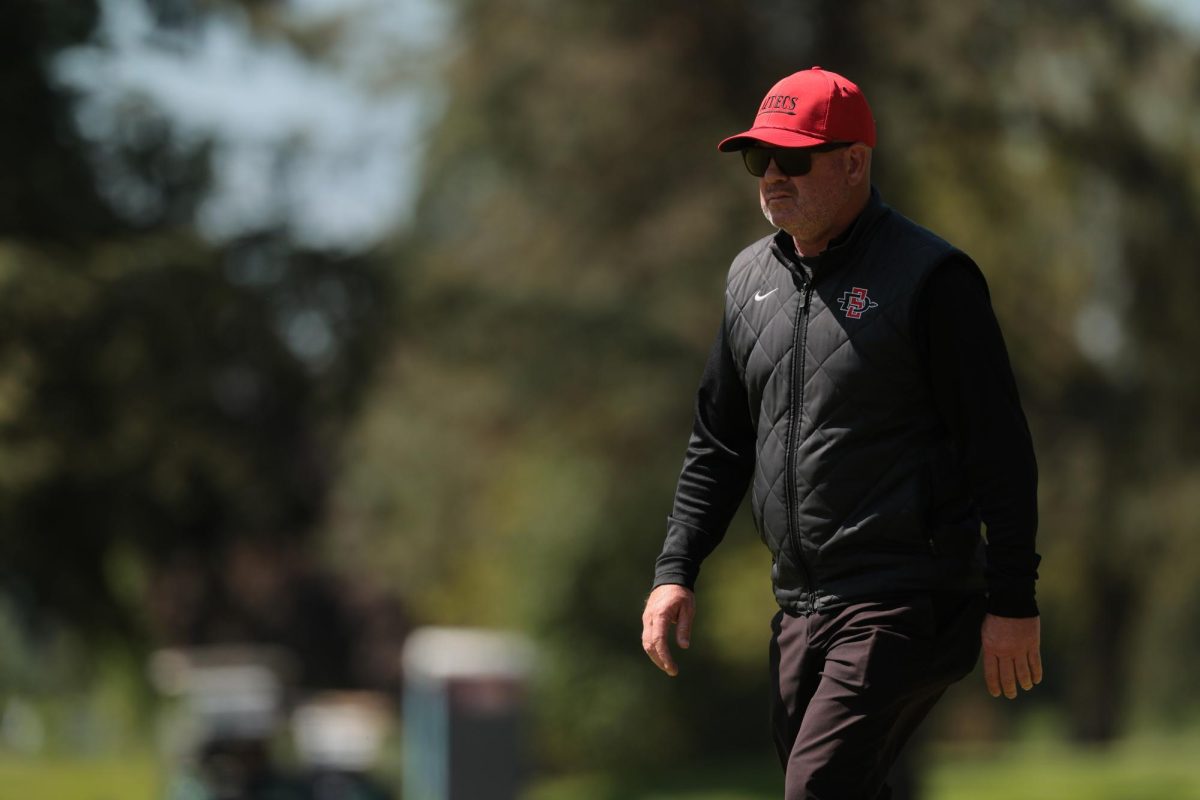Óscar Pacheco, his wife and his daughter have been living in their Beta Street house without a front door for months. This family, who lost everything in their home during the flooding in Southeast San Diego earlier this year, moved back into their half-finished house when the hotel vouchers provided by the San Diego County Board of Supervisors ran out.
“We had already fixed one bedroom, one bathroom and the kitchen, so we moved back in,” Pacheco said. Despite what his family has gone through, he remains positive in the future. “We are almost done,” he added.
On Jan. 22, a storm that left 2-4 inches of rain in a span of four hours in different parts of San Diego County changed the lives of almost 1,000 people, including Pacheco and his family, in the Southcrest neighborhood.
The floodwaters that accumulated in and around residences along Beta Street rose up to 5 feet. Neighbors perched on top of their roofs while the water washed away all their belongings.
Ten months after the storm with Southern California’s wet season upon them, residents fear what another storm might bring. The stormwater infrastructure around Chollas Creek, which runs parallel to Beta Street, remains largely unchanged.
Maintenance
Still struggling to recover, the majority low-income and Latino Southcrest community has been actively working to rebuild and prevent another major flooding event. Hundreds of Southeast San Diego residents, including Pacheco’s family, have sued the City of San Diego. The lawsuit contends that city officials have known of the stormwater infrastructure shortcomings in the area for decades, and it accuses officials of neglecting creekbed maintenance.
In the lawsuit, residents claim that the Chollas Creek canal was full of trash, debris and non-native plants that contributed to its clogging, and dumped water into the neighborhood streets.
San Diego Mayor Todd Gloria claimed at the Sept. 18 ABC 10 News mayoral debate that city officials need to obtain permission from the State of California in order to clear out natural habitats like Chollas Creek.
“Councilmember David Alvarez is working to remove some of the bureaucratic hurdles that are put in front of cities like us,” Gloria said.
The City cleared the canal after the flooding, but by October 2024, non-native vegetation was growing once again, and trash was scattered throughout.
Mae Stevens, CEO of American Business Water Coalition, a group of businesses that advocate for water infrastructure investment in the United States, said in an interview that funding is a major obstacle to cities fixing their stormwater infrastructure in January.
San Diego City Council President Sean Elo-Rivera had put forth a ballot proposal that would have collected tax money and funneled it directly to stormwater infrastructure. However, this measure was dropped from the ballot in July.
Voters in San Diego got to decide to funnel more city funds to stormwater infrastructure on the Nov. 5 ballot, Measure E, a 1-cent-on-the-dollar sales tax increase. It failed to reach the 55% required to pass with 271,468 votes (49.18%), while 280,556 votes (50.82%) were against it.
Sumer Hasenin, deputy director of the Think Blue infrastructure division of the City of San Diego, is in charge of the vision for the city’s stormwater infrastructure.
During an interview, she said that she’s aware that her division is often invisible, “but at the same time, stormwater is a top priority for the mayor and the City Council.”
Climate change
At Southcrest Trails Park, which separates the community from Chollas Creek, and one of the contention points where water will escape the canal into the neighboring streets, a 3-foot-tall yellow barrier guards the perimeter.
Hasenin confirmed that this yellow contraption is a temporary flood barrier.
“Even though our crews maintained the channel, and removed the accumulated vegetation and debris, just in the event that we get a large storm similar [to] the January one,” she said.
However, for Pacheco, the temporary barrier does not look reassuring.
“If there’s another big storm, I don’t think those are going to do much,” he said.
One of the meteorological effects of climate change is atmospheric rivers – large concentrations of vapor in the atmosphere in the shape of a river that pushes inland from the Pacific and presents large amounts of precipitation.
An atmospheric river caused the Jan. 22 flooding of Southcrest. It rained so much that federal authorities called the storm a 1,000-year event, a term used when rainfall supersedes what the authorities deem they need to prepare for, also called the 100-year storm.
Now, with climate change, these 1,000-year rain events may happen more often. But cities throughout the country, including San Diego, aren’t preparing for them.
“None of our infrastructure that we built is built for the 1000-year storm … because they are very rare,” Hasenin said. “To protect the community from that you need massive infrastructure. You would need to carve out a big part of the city for space for the water to go. It’s not a practical solution, so no one designs for it.”
The vision: Green infrastructure
Hasenin obtained a $733 million low-interest federal loan for San Diego that her division has already earmarked for roughly 70 stormwater infrastructure projects throughout the city in different stages from design to construction.
“We have pump stations, pipeline replacements, green infrastructure, culverts, and so on,” she said.
“[The Chollas watershed] is one area in the city that has very old infrastructure, including the Chollas Creek itself that’s undersized,” Hasenin said, adding that many of the 70 projects will be within this watershed, including the Southcrest Green Infrastructure project.
Green infrastructure is a collection of nature-based techniques to slow down, reduce or prevent stormwater flows.
Many green infrastructure projects, like the one in Southcrest, involve the creation of a bio-retention basin, a sunken area planted with native flora that collects rainwater, often filtering it before it goes back to the flow.
One of the first green infrastructure projects recorded in the United States was the Cuyahoga Falls Rain Garden, where authorities expropriated four properties next to each other in a flood zone and built a rain garden with green infrastructure. Not only did the community gain a solution to its flooding problem, but a green, walkable and public space.
Green infrastructure can also be done on a smaller scale. The city of Toledo, Ohio, made sidewalks permeable, added bioswales to front yards, and implemented rain gardens and rain barrels on Maywood Avenue, a flood-prone area, in 2011. The project reduced the average stormwater runoff by 64%.
A local example of a green streetscape is San Diego County’s Green Streets Clean Water plan which puts vegetation, soil and engineered systems to work on the roads in unincorporated areas.
One of the techniques within the green infrastructure scope that has been scientifically proven to reduce stormwater flows even in bigger rain events is the installment of permeable pavement options. Permeable pavement is not cheap and the upfront costs are a barrier for many communities, but a University of California, Davis, paper explains, the benefits “are far greater than current impervious asphalt.”
Experts note that green infrastructure alone can’t solve the problems of flood-prone communities in the midst of climate change. The city of Albany, N.Y., carried out a green and gray infrastructure side-by-side project on the Hansen and Ryckman alleys. Crews constructed wetlands, an underground cistern system, and separated stormwater pipes, with the result that in a 1.59-inch rain event, the stormwater flow was found to be zero – a 100 % reduction.
SDSU Mission Valley
Much like areas around Chollas Creek, a lot of Mission Valley is a flood zone. When San Diego State University took over the Qualcomm Stadium lot to develop the Mission Valley campus, the planning, design and construction department knew they needed to rise to the occasion. Project manager Paul Jackson said they designed the $225 million project to not only filter water before it flows to the river but also prevent flooding.
SDSU Mission Valley features four bio-retention basins, one of them still in construction.
“The largest basin holds 109,000 cubic feet of water. The two smaller basins hold 48,000 cf and 5000 cf of water,” Jackson said.
Underneath the basins, several layers of filtration slow down the flow and strip pollutants before the water is released into the river.
The site’s storm drains allow all rainwater to flow through the basins before it goes to the river.
“When this was Qualcomm stadium, everything outside was a parking lot, [the] stormwater would hit the asphalt and go into the river,” Jackson said, adding that oftentimes the parking lot and the stadium would flood.
To prevent this, the team turned the flood-prone land next to the river into the San Diego River Park, which acts as a floodplain.
“We built up the grade for the future residential pads and innovation district and we remapped the floodplain around those so that the park is designed to flood on a 100-year storm event,” Jackson said.
This theory was tested on Jan. 22, when, according to Jackson, the design did what it needed to do.
“The river was so backed up that the water stopped flowing [into it],” Jackson said. Then, the water level started going up covering the grassy areas of the San Diego River Park.
“None of the trees, the infrastructure, sidewalks [or] anything else was damaged in that flooding. We were really pleased to see that it functioned as it should. Everything is theoretical until you can implement it and get a rain event to really test it,” he concluded.
As of this writing, the SDSU Mission Valley site is not fully developed, so the amount of stormwater it creates will increase when the residences and Innovation District are built up.
Limitations
According to Hasenin, the Southcrest Greenwater project is not expected to prevent flooding in a big storm, but rather slow down the first rain and filter out pollutants from four drainage areas while giving the community green space.
A second, gray (non-nature based) infrastructure project in the works in the Southcrest area, known as the Beta St Channel and SD Improvement, “includes the installation of new storm drains, the upsizing of existing storm drains, the addition of a new pump station on parkland, the expansion of the Chollas Creek Channel, and the construction of a concrete V-ditch along Beta Alley,” according to the project website.
Hasenin said that even when the combination of these two projects is finished the community will not be protected from a storm similar to the Jan. 22 one. That event was deemed a 1,000-year storm – extremely rare for the amount and intensity of rainwater – by the Federal Emergency Management Agency.
“We design that for the 100-year storm event. Anything above that unfortunately would not be protected,” Hasenin said.
Meanwhile, on Beta Street, many houses still sit empty and dilapidated. Others are in the middle of construction, with tarps covering their missing walls and windows.
Pacheco, a construction worker, has been rebuilding his home in his spare time. He owns his house, and with the insurance payments he has been able to pay for the materials and the help. “The same crew I work with during the day comes to my house and they help me,” he said.
“I have been in the community for 30 years, so now I’m used to it,” Pacheco said, and then joked that he would like to live in Poway, but right now it’s too expensive to move.
Communities like Southcrest, where many people feel trapped, are often the most affected by flooding. Those who can afford to go somewhere else, do.






